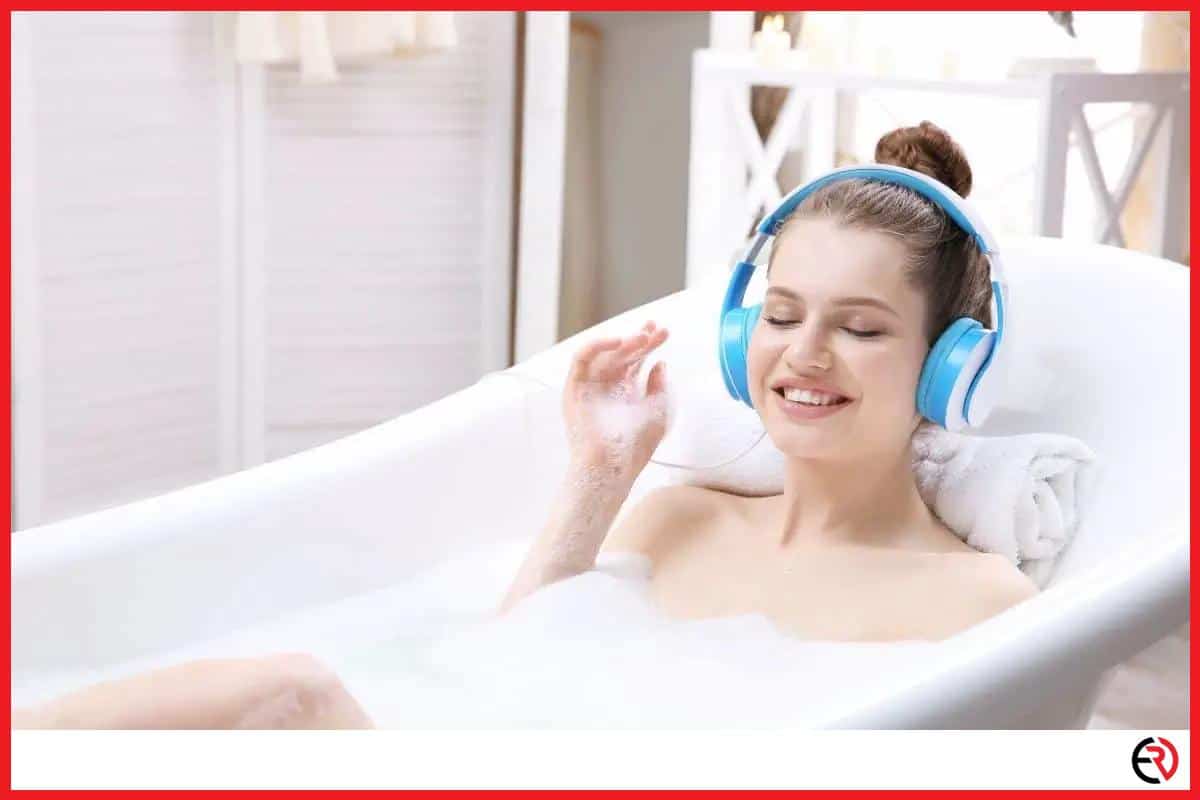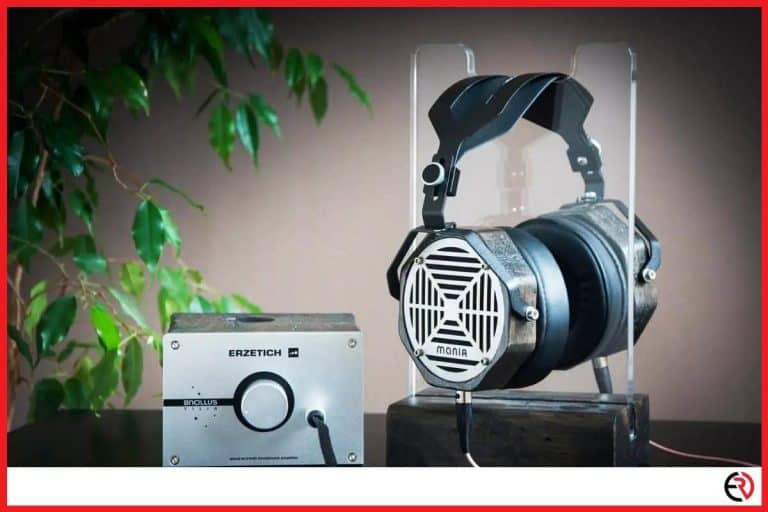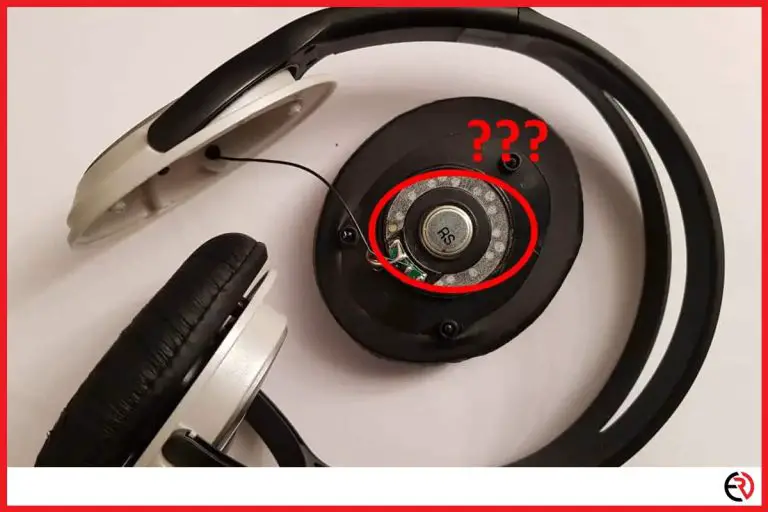Can You Wear Bluetooth Headphones in the Bath? (Be Careful…)
This post may contain affiliate links which means that, if you choose to make a purchase, I may earn a small commission at no extra cost to you.
The first pair of Bluetooth headphones were introduced in 2004, and from that time to the present day, there have been tens and hundreds of million sales of these headphones. It wouldn’t be too far of a claim to say that Bluetooth headphones revolutionized the portable music playing scene.
However, the question today isn’t over the ingeniousness of Bluetooth headphones, but rather how well they’d be able to hold up while the user is taking a bath? Albeit an uncanny question for some people, people are looking for simpler solutions to their everyday music needs, and using a pair of headphones in the shower is one such need.
Before we dive into the specifications and restrictions to using Bluetooth headphones in the bath, one thing has to be made clear:
Under absolutely no circumstances should you wear wired headphones while taking a bath. The potential of getting electrocuted from a pair of headphones skyrockets from close to zero with Bluetooth headphones to probable with wireless ones.
Can Bluetooth Headphones Electrocute You?
Headphones or earphones are electronic devices that contain electronic circuits within them. In the truest sense of devices that hold the capacity to electrocute you, headphones hold the potential. For a device to hold the potential to cause significant damage, it has to be attached to a source that could be damaged or a power source that can cause damage – both of which aren’t there in the case of Bluetooth headphones.
However, several factors come into play here which reduces the chances from significant to close to none:
- IPX Rating
- Conduction Material
- In-ear or Over-ear
- In-line Controls
- Battery Life
- Budget
IPX Ratings
The best way to determine whether headphones can be used in the shower or not is whether the manufacturer has given a guarantee for it. Understandably enough, no manufacturer would give that guarantee to avoid liability. However, they do offer terms such as water-resistance and waterproof.
IPX stands for; Ingress Protection, International Protection, or International Protocol. Electrical equipment often comes with an IPX rating somewhere on the manufacturer’s box. It’s a standardized measure for how much an electronic device is protected from foreign objects; dust and liquids predominantly.
The X is proceeded by two digits: The first is indicative of protection against dust and the second is indicative of protection against liquids. The numbers go from 0-8 (some even reaching 9) with 8 being the highest level of protection provided against foreign objects. Ideally, the level of protection against liquids should be 6 or over to be used during a bath.
For better understanding, here’s a list of various IPX ratings and what they signify:
- IPX0: A zero is indicative that the product is not water-resistant or waterproof in the slightest. A zero signifies a lack of rating and therefore has no guarantee on it whatsoever. DO NOT TAKE AN IPX0 RATED PAIR OF HEADPHONES INTO THE SHOWER.
- IPX1: IPX1 indicates low protection against water and while it might not resist damage if submerged into water, it can withstand working (albeit not for much long afterward) if taken into the shower. They’re, although, perfect for withstanding sweat.
- IPX2: These headphones can withstand being in contact with water for up to 10 minutes at a time.
- IPX3: IPX3 headphones can be used for up to 15 or 20 minutes in water at a time.
- IPX4: From IPX4 onwards to IPX6, headphones are classified as being water-resistant.
- IPX5: Headphones that can last longer than IPX4 and might be used in the shower.
- IPX6: If the power of music is calling you and you absolutely must wear a pair of headphones in the shower, IPX6 is where you should start.
- IPX7: Here on, ratings are classified as being waterproof.
- IPX8: Suitable for continuous submergence up to a (manufacture guided) water depth and time.
- IPX9: Ultimate waterproof time in the bath.
Difference Between Water-Resistant and Waterproof
| Water-Resistant | Waterproof |
| Water-resistant devices are coated with water-resistant materials (waxes, plastics, and such) making them able to withstand water up to a certain depth and for a specified amount of time. | Waterproof devices are marketed as being completely impenetrable to water. They can be submerged in water indefinitely. |
Conduction Materials
One of the prime reasons why people would advise against using wired headphones if they were to come into contact with water is because the wire can conduct through the smartphone and the ear. The wire is in fact a channel for water droplets to travel through from.
Although it’s practically impossible to find a pair of headphones that do not have a plastic coating over their wires, the possibility of bare wires coming off is evident. To recall, headphones do not have the potential to electrocute you, but naked wires are more prone to conduct electricity from a circuit.
In this case, we’re talking about Bluetooth headphones (wireless) that have plastic around them. Given how they aren’t attached to a source such as a phone, they probably will not conduct electricity from the headphones onto the person or damage your equipment.
In-Ear or Over-Ear
| In-Ear Headphones | Over-Ear Headphones |
| – Usually smaller. – Earbuds go into the ear. | – Usually larger. – Earbuds cap over the ears. |
Of the two types of headphones there are; in-ear and over-ear, in-ear headphones are known to withstand liquids better. This is partly because of the design that limits their interaction with the water in itself. Most over-ear headphones have IPX ratings of 5 or lower, while in-ear headphones go up to 9.
In-Line Controls
Volume and other features are either controlled by smartphones or with in-line controls on the headphones. Most in-line controls are standard and pretty basic; volume up, down, mute, call forwarding, and such.
However, with Bluetooth devices, there’s an added feature where the device controls can be activated and adjusted via a mobile phone app. Understandably, such headphones aren’t ideal to be used in the shower.
Not only would that be bothersome, but it holds the potential to damage your smartphone.
Battery Life
You might not have to worry about the battery life on your headphones during a bath because almost every pair of Bluetooth headset has a battery life of up to 6-8 hours. Although some headphones might have battery lives between 3-4, it’s sufficient enough to be used during a bath.
Note: Water damage can significantly reduce battery life if your headphones aren’t water-resistant.
Budget
If you want headphones that were specifically designed to be used in the bath (although aren’t explicitly marketed as such), you’ll need to look for waterproof wireless ones with IPX ratings of 6 or over.
The price point goes up as does the IPX rating. Most IPX7 rated headphones are priced anywhere from $200 to $500, while IPX9 is rare enough to be priced significantly higher – reaching $1000 in some cases.
Do Warranties Cover Water Damage?
Warranties are given by manufacturers wherein they offer to replace or fix a device within a specified time period. While this sounds like an ideal situation, certain parameters make availing warranties complicated.
In this case, we’re talking about water damage. While most companies won’t go as far as saying that their product is completely water-proof, an IPX rating will guarantee the amount of waterproofing even if it wasn’t specified on the box.
While you use the product within the recommended parameters, if it faces damage or defect due to water, you’ll probably be able to avail brand warranty on it.
Why do People Prefer Headphones Over Speakers in the Bath?
This is a tricky question with no straight answer besides the fact that some people just prefer one thing over the other. Before the idea of Bluetooth headphones, people would take in their speakers when they went to take a bath.
Headphones, however, offer several advantages over speakers:
- Noise isolation; the music you hear won’t leave the bathroom and wake up someone in the other room or even apartment.
- Better sound quality; depends on the sort of music you’re listening to.
- In-line controls; again, it’s dangerous for you and your device if you’re constantly exposing it to water each time you touch it.
- Making the most out of bath time.
Conclusion
Using headphones during a bath might sound like an unconventional way to express your love for music, but that’s just for the people who don’t understand just how fun or relaxing it can actually be.
Your headphone operates as a mini-circuit, and needless to say, there is a risk of damage to the product and yourself if it comes in contact with water. However, wireless Bluetooth headphones significantly reduce risk.
Features involved include primarily the IPX rating of the device, the design, the budget, the battery life, and the conduction material. All of which determine whether the product can be used in contact with water or not.
Most warranties do not explicitly cover water damage, however, if the manufacturer has specified an IPX rating indicating that it could withstand water to an extent, it might just be covered with a warranty.
All in all, it’s important to use your device carefully and after having understood the product specifications.







